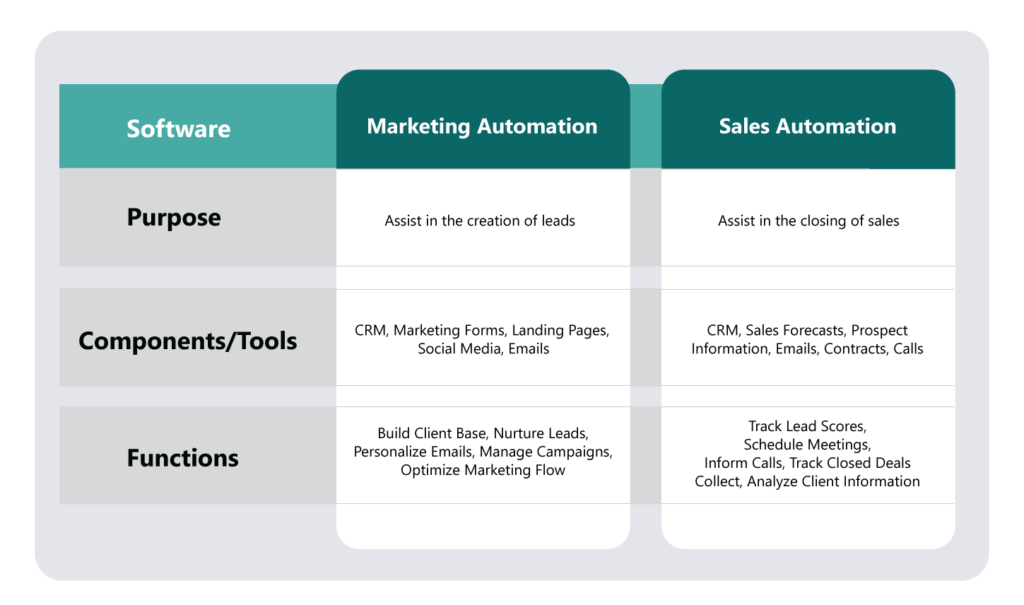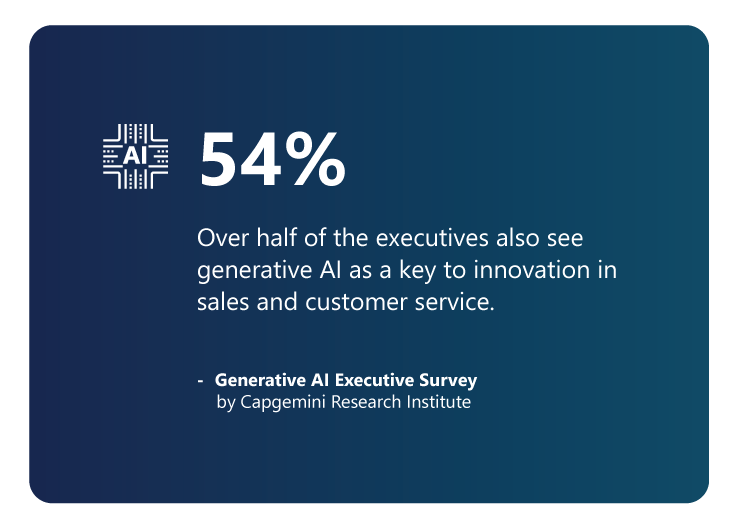

Accelerate Revenue Generation
Empower sales teams and accelerate revenue generation with this 3-week assessment from Hitachi Solutions.
Download the OfferIn the digital economy the need for personalized customer outreach and individualized customer outreach has grown significantly over the past several years. While some industries and departments are trying to understand how to adjust to this new paradigm, the good news for sales teams is that a “personalized approach” is something they’ve been championing all along.
The concept of “white-glove service” has long been the established standard for a high-end sales experience. This style of highly personalized interaction offers the best in convenience, attention, and fulfillment – the epitome of a “customer first” mindset. Of course, if it were that easy, everyone would do it. The challenge has long been how to invest the time and money to promote that level of service, a problem that has compounded as today’s businesses find themselves now able to serve hundreds, if not thousands, of customers on a weekly basis.
Fortunately, there is technology designed to help scale today’s sales departments back up to being able to offer that white-glove level of service. Advances in automation, data management, and analytics in software platforms provide huge benefits for businesses in many areas, ranging from improved customer loyalty and increased revenue to reduced cost and better supply chain management. These modern software platforms can also improve the efficiency and effectiveness of an organization’s sales force – allowing for less time on the “busy work” of data entry and logging information and more time on the specialized work of researching competition and interacting with customers.
How simple could it be? Research has found that one third of sales tasks could be easily automated with a potential cost reduction of 10–15%, while also reducing order processing time from days to just a couple of hours. However, some companies are still reluctant to take that step; as few as just one in four companies are taking advantage of today’s sales enablement solutions.
If businesses want to deliver the best possible sales experience at scale, then there’s an immediate need to understand, and adopt, a sales automation system.
What is Sales Automation?
Simply stated, sales automation is the mechanization of simple yet time-consuming and tedious manual sales tasks such as data entry, running reports, and cross-referencing information. This is accomplished through customer relationship management (CRM) software that manages sales information, while digital tools like artificial intelligence (AI) aid in analyzing that information and providing insights.
Sales process automation is a holistic approach to automation, where the entire top-down sales process – from initial marketing to customer service – is integrated into a single software system. In addition to enabling your sales representatives to spend less time on administrative tasks, this large-scale automated process also ensures that everything is more consistent and uniform.
Marketing automation is a similar concept, where certain components of the marketing process can be automated to save time. Whereas the sales team can spend more time working directly with converting sales and prospects, the marketing team can focus on attracting leads and prospects. A report in Harvard Business Review showcases how marketers can increase operational values for their companies by “constantly upgrading marketing technologies to automate and integrate many aspects of customer relationship management at scale and in real time.”
When aligned, marketing and sales automation can both be leveraged to create a more efficient customer experience through greater freedom for relationship-building activities and direct interaction with clients. While there are some differences regarding which touchpoints of the customer journey they engage in, sales and marketing should be considered as part of a whole. The more that they’re integrated into a combined sales & marketing platform, the more your business is able to offer a seamless customer experience.

Benefits of Using Sales Automation Software
When it comes to closing sales, “saving time” is a great benefit in and of itself, but it’s only a single part of how a sales team can leverage sales automation to their advantage. A focused approach toward automating the sales process can provide:
- Greater visibility of prospects — with relevant information accessible through a centralized system, sales managers can monitor the status of each prospect and lead as they move through the sales pipeline.
- More accurate sales forecasting — machine-learning analytics can be employed to better understand patterns like seasonal trends and behavioral tendencies. Sales prospects can be tracked in real time as they engage with your sales and marketing materials.
- Reduced chance of error – the more things that need to be manually input, the greater the risk for mistakes, errors, and typos. Automated systems can get things right the first time by auto-generating information.
- Enhanced collaboration — as your company and sales teams grow, so do the number of people that need access to an account. Real-time collaboration capability enables sales reps and managers to work on files simultaneously.
- Opportunities for better engagement — new AI-powered applications automate outreach to customers and prospects by auto-generating responses that are on-brand in tone and product or service information. Automation boosts customer engagement and helps ensure fewer interactions fall through the cracks.
- Higher sales volumes – automation of manual sales processes enables sales team members to prioritize high-value interactions, generating more revenue for the business. Thanks to the help of AI-powered solutions, best practices from your top sellers can be implemented so that the entire team is able to perform at their best.
Ultimately, sales automation software can position each sales representative with the means, information, and time to deliver the greatest value to the customer. Effective use of an automated software system can allow for insights into opportunities that your sales time might not even be aware of.
The Rise Generative Al in Automation
Since its introduction in November 2022, generative AI has stunned and excited the world with its potential for reshaping how knowledge work gets done. Across functions such as sales and marketing and customer operations, generative AI offers transformative opportunities, partly because the potential for technical automation is due largely to generative AI’s ability to understand natural language, which is required for about 25 percent of work activities, according to Gartner.
Because sales is heavily customer facing, the opportunity for generative AI to complement existing AI is huge. Generative AI is likely to have the biggest impact on activities involving decision making and collaboration, which previously had the lowest potential for automation.

For example, generative AI could be used to provide continuous support throughout the entire sales process, from proposal to deal closure. With its ability to analyze customer behavior, preferences, and demographics, generative AI can produce personalized content and messaging such as hyper-personalized follow-up emails and contextual chatbot support. It can also act as a 24/7 virtual assistant for each team member, offering tailored recommendations, reminders, and feedback, resulting in higher engagement and conversion rates.
The future of marketing automation is exciting, and AI and ML are set to play a significant role in transforming the industry. By using these tools to personalize content, predict customer behavior, provide better customer service, and optimize marketing channels, marketers can improve their efficiency and effectiveness. As technology continues to evolve, we can expect even more exciting developments in the field of marketing automation.
Key Areas to Automate
Sales automation has potential benefits for all parts of the sales lifecycle and is really only limited by the consideration of where your company can benefit the most. Potential areas for automation include:
- Prospecting – insight tools allow for the aggregation of information from hundreds of data sources across multiple channels (purchase history, customer service logs, social media) for a more comprehensive and up-to-date view of a prospect. Custom filters can be created and defined for more directed searches of prospects and clients.
- Lead management – leads can be automatically qualified based on established criteria to improve prospecting and reduce time disqualifying leads. Auto-rotators can be employed to assign leads based on any defined metric (territory, size, history, etc.) or can be assigned on a “round-robin” basis.
- Contact and deal creation – automated processes can autogenerate records for prospects who satisfy certain criteria, instantly transferring relevant data into appropriate fields (contact information, product details, transaction history). This can be supplemented by integrating different third-party systems like email services, survey generators, and webinars.
- Email templates – templates allow for faster and easier drafting without having to cut and paste content, reducing the risk of errors. Implementing autogenerated, personalized content fields provides an important degree of individual outreach in all your mass communications.
- Outreach campaigns – subscribe prospects to different campaigns when they reach different stages of the sales process, and then automatically unsubscribe them when they meet specific criteria, such as reaching a new stage of the sales process, or submit a response.
- Scheduling meetings – integrating a work calendar with a CRM system allows for the use of clickable links that can instantly reserve a time and date for meetings and calls.
- Sales calls – the use of AI-powered natural language processing software can transcribe sales calls, making it easier to review important conversations or allowing for quick searches of targeted keywords.
- Deal management – auto-log all communication outreach and attempts to generate a client contact history. Time reminders can be set up to generate follow-ups or alert sales team to important deadlines.
- Reporting – reports can be generated via a host of customizable fields that allow for either broad, generalized overviews or specific deep dives into a narrow band of clients. Modern software allows for large reports to be generated in seconds, rather than hours.
- Workflow – automating the workflow process can ensure that the right stakeholders sign off at the right time and in the right order. Different departments can more easily access and approve sales orders without needing to directly contact a sales representative.
How to Prepare for Sales Automation
Interested in taking advantage of the benefits that sales automation can offer? Then there are a few important steps to ensure that your team is ready, and that the implementation of the automation software goes as smoothly as possible:
1. Examine how automation can benefit your existing sales process – don’t fall into the trap of automating for the sake of automating. While the sales automation process can provide important internal benefits, it’s more important to understand how your customer’s experience will be improved. To start with, review which manual parts of the existing sales process can, and should, be streamlined in order to allow representatives to focus on other, more specialized, areas. Perhaps there are some sales elements that either can’t, or shouldn’t, be automated and require direct human interaction.
2. Identify points of friction for your sales team and your prospects – once you’ve identified the areas that shouldn’t be automated, take a closer look at the areas that are the highest priority. Discuss the pain points that your team is experiencing and the areas where the workflow process can be improved. Review the specific pain points that your current clients are experiencing and ask how automation might alleviate their problems. From there, you can get a sense for what you’ll be able to save in time and money when those processes are automated.
3. Help your sales team see the benefits – after you have an idea for how you’ll benefit, then it’s time to secure buy-in from your team. After hearing their concerns, present to your sales reps and managers how automation will help to resolve those pain points and improve the sales process. Once they understand the value of the incoming system, then they’ll be more likely to adopt it.
4. Invest in change enablement — team member buy-in is just the beginning; once your sales team is on board, you need to create a plan to actually execute the sales automation software implementation. This will likely consist of a few important steps:
- Perform an organizational change assessment in order to determine risks and impacts for employees and make plans to properly address them.
- Determine the adoption readiness of your team and customize the training and communications required for their specific needs.
- Develop a best-practices approach for the implementation in order to streamline the transition.
- Guide your stakeholders and leadership through the more complex changes in order to on-board them faster and accelerate the adoption of the new system.
Drive Sales Automation with Hitachi Solutions
When you’re ready to start preparing to implement sales automation software, you’ll need to partner with a company who can understand your points of friction, identify how ready your team is, and help you through the implementation process.
Hitachi Solutions’ goal is to assist you in evaluating your current needs and to work directly with your team to best determine how to foster the power of sales automation and take advantage of new innovations, like generative AI.
Our team of experts provides best-in-class service for integrating technology like D365 for Sales and Microsoft Power Platform into your current sales processes while helping you build a plan to harness the power of Microsoft innovations such as Microsoft Sales Copilot. Sales Copilot provides next-generation AI assistance so sellers and sales teams can more easily automate tasks, deliver personalized customer experiences and focus on the most valuable opportunities.
Contact us today to get started on the path towards innovative strategies to stay ahead of the sales curve.


